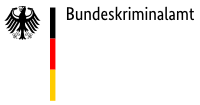
During the securing of case-related evidence, animal traces are also often found. Domestic animals are kept in approx. 34 percent of all German private households. Cats and dogs, in particular, live in close companionship with humans, so that directly or indirectly, their hair is unavoidably transferred into dwellings, onto clothes, into vehicles etc..
In the case in question, an extortionist demanded the hand-over of the money in a linen bag, which he had laid out.
 Dog and rabbit hair under the microscope
Dog and rabbit hair under the microscope
During securing of evidence, several hairs could be extracted from both from the interior and exterior of the bag, which exhibited the morphological characteristics of dog hair. These hairs are then available for a subsequent comparative analysis, for example if a dog-owning suspect should be ascertained. If the DNA profile of the hair traces then agrees with comparison material from the dog in question, then, directly or indirectly, the bag must have come into contact with this dog or its owner.
 Taking a saliva sample from a dog
Taking a saliva sample from a dog
With animal hair until recently, on the basis of morphological characteristics, only a determination of the genus, or species to which it belonged, was possible. In the recent past, a standardisation of DNA analysis on dogs was successfully developed at the KTI, which is now established in case processing. Since then, it is possible to adduce the individual correlation of a dog trace - not only from hairs, but also from secretions - to a specific animal. This method used on dogs is equivalent to the analysis procedure which is also applied during the DNA analysis of human traces. The procedure differs solely in the use of species-specific reagents, which were specially developed for tests on dogs
